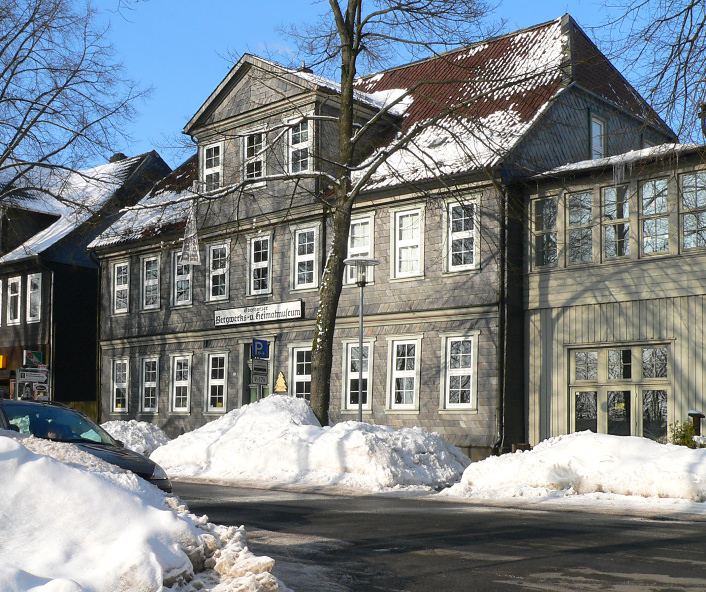Phone +49 5323 98950 | ||
 | ||
Hours Closed now Sunday11AM–4PMMonday11AM–4PMTuesday11AM–4PMWednesday11AM–4PMThursday11AM–4PMFriday11AM–4PMSaturday11AM–4PMSuggest an edit Similar Upper Harz, Samson Pit, 19‑Lachter‑Stollen, Rammelsberg, Grube Lautenth | ||
Grube samson o0o fahrkunst o0o
The Upper Harz Mining Museum (German: Oberharzer Bergwerksmuseum) is a museum of technological and cultural history in Clausthal-Zellerfeld in the Harz mountains of central Germany. It is one of the oldest technological museums in Germany and concentrates on the history and presentation of mining in the Upper Harz up to the 19th century.
Contents
Exhibits
The museum lies in the middle of the district of Zellerfeld within Clausthal-Zellerfeld. Its exhibits include:
History
The history of the mining museum began in 1884, when the Berghauptmann Adolf Achenbach called upon the miners in a directive to bring in artefacts, especially disused tools associated with historical mining, to put together a collection to start a museum. In 1892 the official foundation of the museum took place in the district of Zellerfeld.
After the previously independent towns of Zellerfeld and Clausthal merged into the 'double-town' of Clausthal-Zellerfeld in 1926 the town hall in Zellerfeld became free. In the years that followed the open land was used to build a demonstration mine.
In the 1960s and 1970s the museum was headed by Herbert Dennert. In this period to the end of the 1980s the mining museum had annual visitor numbers than ran to six figures. But from about 1990 the number of visitors declined markedly for various reasons (e.g. reducing tourism in the Upper Harz, but also with considerably more advertising by other mining museums in the Harz). Nevertheless, around 5.5 million people have visited the Upper Harz Mining Museum to date (as at March 2010).
Operation
The mining museum is operated by the Upper Harz History and Museum Society (Oberharzer Geschichts- and Museumsverein). The municipality of Upper Harz has covered its losses in the past.
The museum runs, as satellite branches, all the above-ground mining facilities of the closed Ottiliae and Kaiser Wilhelm Mines as well as the recently inherited facilities (round gin house, etc.) of the Rosenhof Pit.
The museum also hires out an extremely effective and inexpensive electronic guide system 'E.guide EMIL, which provides commentary along a walking route that 'follows the footsteps of former miners' through the landscape of the disused mines.
